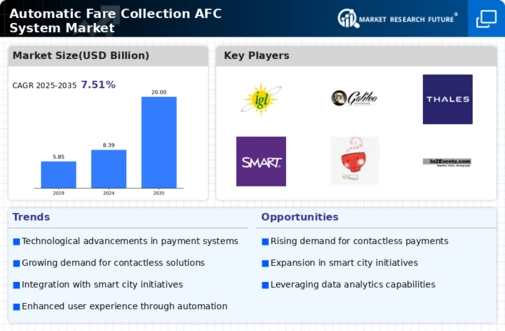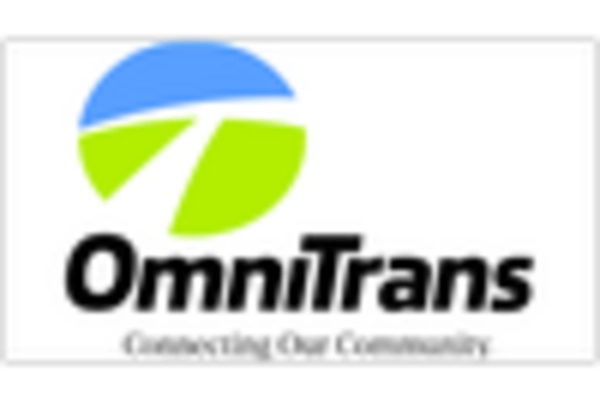Government Initiatives and Funding
Government initiatives aimed at modernizing public transport infrastructure are significantly influencing the Automatic Fare Collection AFC System Market. Various governments are allocating substantial budgets to enhance transit systems, which includes the implementation of advanced fare collection technologies. For instance, funding programs and grants are being established to support the deployment of AFC systems in urban areas. This financial backing is crucial, as it enables transit authorities to upgrade outdated systems and adopt innovative solutions that improve fare collection efficiency. The market is expected to witness a surge in investments, with estimates suggesting that public funding could reach billions of dollars over the next decade, thereby propelling the growth of the AFC market.
Integration of Advanced Technology
The Automatic Fare Collection AFC System Market is experiencing a notable shift towards the integration of advanced technologies such as artificial intelligence and machine learning. These technologies enhance operational efficiency and improve user experience by enabling real-time data processing and predictive analytics. The market is projected to grow at a compound annual growth rate of approximately 12% over the next five years, driven by the demand for smarter transit solutions. As cities increasingly adopt smart transportation systems, the AFC systems are evolving to incorporate features like mobile ticketing and automated fare adjustments, which cater to the needs of tech-savvy commuters. This technological integration not only streamlines fare collection processes but also enhances the overall efficiency of public transport systems, making them more attractive to users.
Increased Focus on Passenger Experience
The Automatic Fare Collection AFC System Market is increasingly prioritizing passenger experience as a key driver of growth. Transit authorities are recognizing that enhancing user satisfaction is essential for attracting and retaining riders. This focus has led to the development of user-friendly interfaces, mobile applications, and contactless payment options that streamline the fare collection process. Research indicates that systems that prioritize passenger convenience can lead to a 20% increase in ridership. As competition among transit providers intensifies, the emphasis on improving the passenger experience is likely to shape the future of AFC systems. By investing in technologies that facilitate smoother travel experiences, transit authorities can foster loyalty and encourage more individuals to utilize public transport.
Rising Urbanization and Public Transport Demand
Urbanization continues to surge, leading to an increased demand for efficient public transport systems. The Automatic Fare Collection AFC System Market is poised to benefit from this trend, as cities strive to accommodate growing populations. With urban areas projected to house over 68% of the world's population by 2050, the need for effective fare collection mechanisms becomes paramount. AFC systems facilitate seamless travel experiences, reducing wait times and improving service reliability. Furthermore, as governments invest in public transport infrastructure, the AFC market is likely to see substantial growth. The integration of these systems not only enhances revenue collection but also encourages the use of public transport, thereby alleviating traffic congestion and reducing carbon emissions.
Sustainability and Environmental Considerations
The Automatic Fare Collection AFC System Market is increasingly influenced by sustainability and environmental considerations. As cities strive to reduce their carbon footprints, there is a growing emphasis on eco-friendly transit solutions. AFC systems play a pivotal role in promoting sustainable transport by facilitating the use of public transit, which is generally more environmentally friendly than private vehicle use. Moreover, the integration of digital ticketing and contactless payment options reduces the reliance on paper tickets, contributing to waste reduction. Market trends suggest that transit authorities are likely to invest in AFC systems that align with their sustainability goals, potentially leading to a market growth rate of around 10% in the coming years. This alignment with environmental objectives not only enhances the appeal of public transport but also supports broader initiatives aimed at combating climate change.


















Leave a Comment